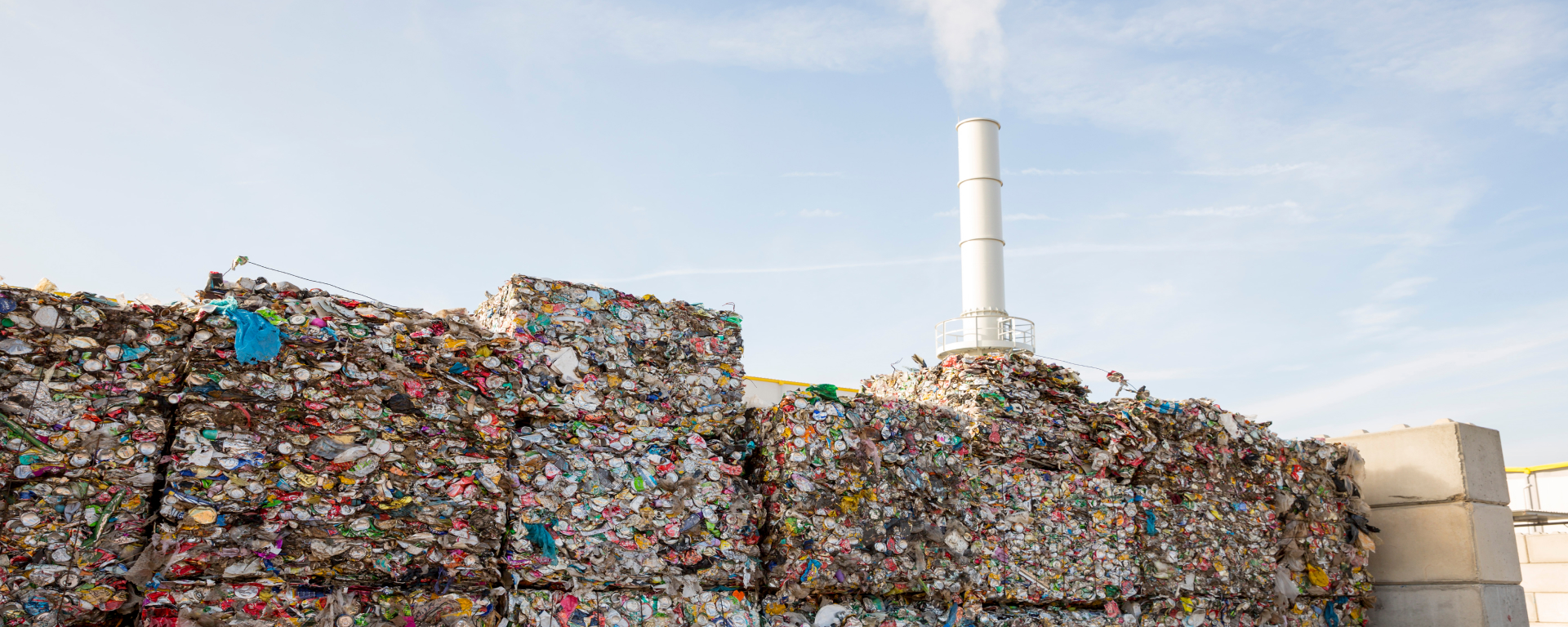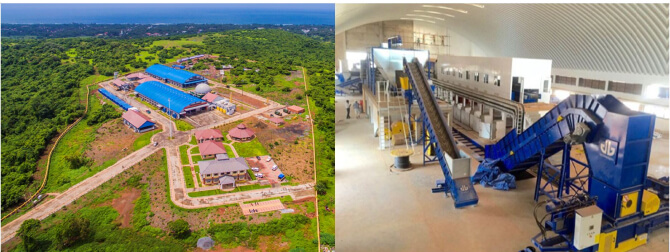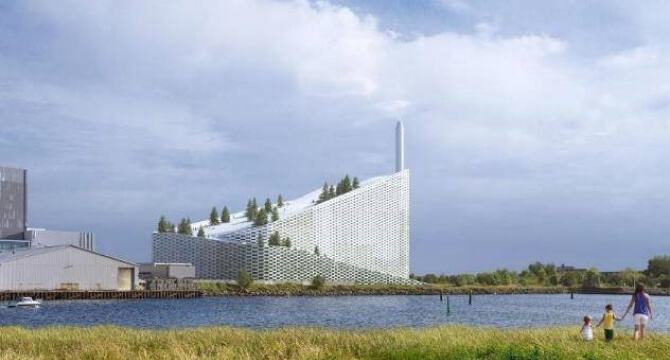Trashing it Out: Waste Management in Asia
The world is generating more waste than ever. This makes waste management a critical issue that deserves no less attention than the likes of poverty elimination and climate action. Generating waste is easy, but managing it is difficult. Developing a waste management facility is not without its challenges. This collated article will examine the key considerations when developing waste management facilities, and uses specific case studies to illustrate their importance.
Wasting away
The world is generating more waste than ever. Waste generated in Asia Pacific is projected to increase from about 802 million tonnes in 2016 to 1.1 trillion tonnes in 20301. In Southeast Asia alone, waste volume has been increasing rapidly since 2000, reaching about 150 million tonnes in 2016. By 2030, the amount is estimated to more than double2.
We observe and feel this happening around us. Take online delivery as an example. The advent of e-commerce has made it much easier to have items delivered to our doorsteps with just a few taps on our devices. We dispose of the packaging and the leftovers with little appreciation as to what happens to them after they end up in the bin. While some of our waste can be recycled, a large portion will end up in landfills.
If only it could be swept under the carpet. Some waste unfortunately lingers for decades and makes waste management a critical issue that deserves no less attention than the likes of poverty elimination and climate action3. Poorly managed waste will result in consequences that are too severe to bear. Solid waste clogs drains, exacerbates flooding and promotes breeding of vectors. Waste is building up in nature, washing out to and polluting rivers and eventually ending up in the oceans. Open burning releases toxic pollutants and allergens linked to respiratory issues. Landfills take up significant land space and may not be sustainable in the long run for many countries.
Small wonder that various countries have stepped up efforts to reduce waste volume through recycling and better manage solid waste. Many are considering waste-to-energy (WTE) technologies, such as incineration, which takes municipal solid waste through an environmentally friendly combustion process and recovers the heat value of the combusted waste to generate steam and electricity. Allard Nooy, CEO, InfraCo Asia pointed out that WTE helps to reduce carbon footprint on two levels. Firstly, less waste disposal to landfills means less methane and other greenhouse gases (methane is at least 20 times more harmful to the environment than carbon dioxide). Secondly, energy is now produced from waste instead of burning fossil fuels which further reduces emission of greenhouse gases.
But developing a waste management facility is not without its challenges, observed Seth Tan, Executive Director, Infrastructure Asia, who has experience in leading numerous transactions related to waste management. (a) Appropriate technology, (b) waste amount, (c) regulatory frameworks, (d) commercial arrangements and structuring, and (e) social perception are but some of the most important considerations when developing a waste management facility4.
Sorting it out
Appropriate technology
There is no one size fits all. Technology selection will depend on factors such as waste type, waste moisture content and calorific value, regulatory framework and location of waste facility. Carsten Schneider, Head of Business Development (Southeast Asia), Ramboll, said that he would recommend identifying the technology early, for example at the pre-feasibility study stage of a waste treatment project, as technology selection can affect the viability and bankability of the project.
A general rule of thumb is that if the waste has a calorific value of around 6 MJ per kg5, WTE using grate-based combustion can be considered. The issue with municipal solid waste in Southeast Asia is that it is often relatively wet and therefore has a calorific value of below 6 MJ per kg. There are a few options to address this. One can consider pre-treating the waste to remove moisture thereby improving its calorific value, or simply by designing the bunker for pre-storage of the waste to remove free water. In many cases, this will be sufficient to remove enough water that the waste can be combusted.
For very wet waste and waste that mainly comprises organic fractions, biological treatment such as anaerobic digestion or aerobic composting can be considered, based on Ramboll’s experience. The residue from these processes can sometimes be used as fertiliser, but it can be very challenging to achieve the cleanliness required to be used for agricultural use, especially due to micro-plastic and other impurities. The more segregated and cleaner the incoming waste fractions are, the better output can be expected.
Another alternative is mechanical treatment of the waste to sort out high calorific waste fractions to be used as a fuel, typically in cement kilns, called Refuse Derived Fuel (RDF). The challenges for these projects include (a) getting long term agreements for the offtake of RDF, thereby making the projects bankable, and (b) meeting the technically high demands for the quality of RDF to be produced. For power-producing treatment methods, it is easier to estimate the future revenue streams covered by the Power Purchase Agreement (PPA).
In Southeast Asia where the waste fractions are typically co-mingled, one may consider an incineration plant, a combination of incineration and anaerobic digestion, an RDF plant or combination with the other technologies. Projects may always be seen in a circular economy approach, where waste is recycled to the extent that it is technically and economically feasible. Technical advisors will consider all factors, including the waste collection system and economics, when determining the technology, as all these factors are intertwined. At the end, the client should end up with the right technology for long term, and a cost-effective and secure operation that is tailored for local conditions and regulations.
Waste amount
Waste amount is important from two perspectives.
First, if one is considering an incineration-based WTE plant, then it needs a minimum amount of waste to make economic sense. A rule of thumb is to have at least 500 tonnes per day of waste – the more the better, especially if low calorific value is expected. This is not to say that plants below 500 tonnes per day would be infeasible. There are plants with capacities as low as 50 tonnes per day, for example airport waste management plants, and WTE can therefore be adapted to local conditions, but they may be more difficult to be made bankable.
Second, in the case of a public-private partnership (PPP) project, the private sector developer would need to be assured that it will receive enough waste daily so that it can collect sufficient tipping fees and have enough waste to produce electricity for sale. Developers will unlikely bear risk if the waste provision is uncertain, after considering the high capital outlay. This was why only one bid was received by Singapore’s National Environment Agency (NEA) when it first called for proposal for Singapore’s fifth WTE plant in 2001. NEA wanted the developer to undertake finance, design, operational and demand risk6.
A study was then commissioned, and the project was re-tendered in 2005 with material changes in the terms. One of the key changes was the adoption of the “take-or-pay” approach, where the government either buys 100% of the incineration capacity from the developer or pays the developer a penalty. This means that the government will bear “demand” risks by giving the developer full capacity payment, regardless of the actual utilisation rate of the WTE plant.
The tender attracted good responses from the market, and Keppel Seghers was awarded in 2005. The plant started operations in 2009, treating 800 tonnes of solid waste daily to generate about 22 MW of green energy. It is equipped with two incinerator-boiler units with one condensing turbine-generator. It incorporates Keppel Seghers’ in-house technologies such as the air-cooled grate and flue gas cleaning system7.
Not all governments would be prepared to adopt the “take-or-pay” approach and absorb full demand risk. In such situations, the WTE plant developer and/or the structuring advisor would need to be creative and identify guaranteed sources of waste and revenues. This can be done by, for example, signing waste supply agreements with factories, farms around the WTE plant, or waste collector companies, and signing offtake agreements for refuse derived fuel (RDF) and electricity with nearby industries.
Regulatory frameworks
Clear enabling legislations are critical to allow waste management projects to get off the ground. First, clear legislations give clarity as to whether the technology used and plant discharges comply with the relevant regulations and emission standards, which is important to developers and financiers. Second, legislations that allow higher tariffs to be charged for electricity generated by a waste management facility would enhance its financial viability and reduce reliance on tipping fees.
Infrastructure Asia notes that The Philippines has filed Senate Bill No. 3638, also known as the Waste-to-Energy (WTE) Act, and is of the view that it is a good move to clarify the relevant WTE legislations.
First, it mandates the inclusion of a WTE strategy in the national, provincial and local government solid waste management plans. Secondly, it provides the clarity that WTE plants will be considered as solid waste management facilities and exempted from the ban on incineration so long as it complies with the emission standards under the Clean Air Act. Thirdly and more importantly, local government units (LGUs) will be allowed to cluster and enter into long term contracts, joint ventures, PPPs and cooperative undertakings to develop WTE projects. Not only does this address the issue of one LGU not having enough waste supply for a WTE facility, but it also brings together the LGUs to reap economies of scale.
Vietnam has also moved in a similar direction. The government has implemented numerous policies in favour of firms involved in WTE projects. The major regulations are mentioned in9:
- Decision 3110 , which stipulates the supporting mechanism for development of WTE projects.
- Circular 3211, which deals with the development of grid-tied WTE projects and provides a model electricity sale contract for WTE plants in Vietnam.
- Decree 11812, which deals with investment incentives and schemes in various sectors including construction of concentrated solid waste treatment zones and collection, treatment, recycling, and reuse of waste.
Vietnam has also stipulated the relevant tariffs for WTE plants, e.g. 10.05 US cents per kWh for WTE plants using incineration, and 7.28 US cents per kWh for WTE plants that burn gases from landfills.
Commercial arrangements and structuring
Unlike a water treatment plant where one can fairly estimate the investment cost based on the MLD13 produced, a solid waste management facility is a different ball game altogether, noted Kunal Shah, Managing Director and Regional Business Development Head, Anaergia Singapore. It depends on a myriad of factors, such as the characteristics of the waste which varies from country to country and seasonally, regulations related to air, soil, water quality, quantity of waste to be processed, space constraints and overall regulations for solid waste management and government support, just to name a few. Waste management is currently heavily focused on the models of PPP and Build-Operate-Transfer (BOT), which makes revenue sources, such as tipping fees, feed-in tariffs, and prices of RDF, recyclables and compost, critical factors for successful implementation.
Goa Waste Management Facility built by Anaergia in India under operation since mid-2016
(source: Anaergia)
The Nambo project in Indonesia is a case in point. It illustrates how proper commercial strategy and structuring is critical to materialising a WTE project, noted Wen Bin Lim, Deal Advisory Director, KPMG in Singapore, who advised on the project. This Nambo project entails the development of a solid waste processing facility using mechanical biological treatment (MBT) in Nambo Regional Final Disposal Site, West Java, Indonesia, to treat 1,500 tonnes of solid waste per day for a concession period of 25 years under a Build-Own-Operate-Transfer (BOOT) scheme, which was tendered by the West Java Provincial Government. KPMG’s client, the winning consortium, proposed to build a waste treatment facility that produces RDF to be used as feedstock by a leading cement company PT Indocement Tunggal Perkasa14 as the off-taker15.
Social perception
The “not in my backyard” approach is prevalent when it comes to the siting of waste management facilities. While many know that building waste management facilities is an effective and sustainable way of solving waste management issues, few would agree to having one built in their local area. They would however tolerate or support it if it were built farther away. This could be due to the misconception that such facilities would be unsightly, produce unpleasant odours or emit harmful substances.
The advancement of technology combined with innovation, creativity and good technical skills has allowed many aesthetically pleasing and odourless waste management facilities to be built with near-zero harmful substances emitted.
Amager Bakke, a 2 x 1,000 tonne per day WTE plant in Copenhagen, for which Ramboll acted as the owner’s engineer, can best illustrate this. Not only does the incineration plant’s roof double as a ski slope and a hiking trail, there is even a restaurant and a bar at the very top of the building, which is one of the highest points in the city16. It is located just 200 metres from residential areas.
Its state-of-the-art technology ensures that nothing noxious will be emitted. This is crucial, as it hopes to attract more than 300,000 visitors each year.
Amager Bakke, a 2 x 1,000 tonne per day WTE plant in Copenhagen, which doubles as a ski slope
(source: Ramboll)
But such sophisticated pollution control systems can be costly. What we need to acknowledge is that sustainability comes at a price, which needs to be paid either by the government or directly by the public. The reward is a future for everyone.
Don’t get wasted
Generating waste is easy, but managing it is difficult.
It took years for the Western countries, China and Singapore to iterate and arrive at their current waste management models. But they did not stop there. Singapore, for example, is constantly finding innovative ways that can optimise land use, maximise energy and resource recovery, and minimise environmental impact. It is now developing the Integrated Waste Management Facility (IWMF) which will have the capacity to process incinerable waste, household recyclables, source-segregated food waste, and dewatered sludge from the co-located Tuas Water Reclamation Plant.
Countries will benefit from exchanging views, not just with one another on experiences in waste management, but also with the subject matter experts, such as the technical, structuring and legal advisers that have waste management expertise.
Given Singapore’s journey in waste management and its infrastructure ecosystem that comprises a good number of waste management experts, it is well-positioned to share the relevant knowledge and ideas with countries that have plans to better manage their solid waste. Infrastructure Asia can be a port of call for such discussions.
1 Data based on South Asia, East Asia and Pacific from World Bank publication “What A Waste 2.0 – A Global Snapshot of Solid Waste Management to 2050”. 2 United Nations Environment Programme: Summary Report of Waste Management in ASEAN Countries (2017) 3 The General Assembly of the United Nation has included Clean Water and Sanitation as one of the 17 Sustainable Development Goals (SDGs) under the 2030 Agenda for Sustainable Development that it adopted. See https://www.un.org/development/desa/disabilities/envision2030.html 4 Read more in Asian Development Bank’s Integrated Solid Waste Management for Local Governments – A Practical Guide. See https://www.adb.org/sites/default/files/institutional-document/324101/tool-kit-solid-waste-management.pdf.
5 http://siteresources.worldbank.org/INTUSWM/Resources/463617-1202332338898/incineration-dmg.pdf
6 Loh Ah Tuan, Consultant, Keppel Seghers Engineering Singapore, June 2016. See https://d2oc0ihd6a5bt.cloudfront.net/wp-content/uploads/sites/837/2016/03/B4_2_TUAN-Loh-Ah_Keppel-Seghers-Engineering-Singapore.pdf
7 Read more about Keppel Segher’s WTE plant here: https://www.infrastructureasia.org/en/projects/keppel-seghers-tuas-waste-to-energy-plant
8 Forum of Renewable Energy and Waste Management, PPP Center of the Philippines.
9 Vietnam Briefing from Dezan Shira & Associates. See https://www.vietnam-briefing.com/news/opportunities-waste-energy-sector-vietnam.html/
10 Full title is “Decision 31/2014/QD-TTg”
11 Full title is “Circular 32/2015/TT-BCT”
12 Full title is “Decree 118/2015/ND-CP”
13 Million litres per day
14 Official Website of West Java Province – First in Indonesia: TPPAS Lulut Nambo use MBT technology. See https://www.jabarprov.go.id/En/index.php/news/6998/First_in_Indonesia_TPPAS_Lulut_Nambo_Use_MBT_Technology
15 For cement kiln to be the off-taker of RDF, the calorific value of the waste should be at least 14MJ per kg.
16 https://qz.com/1560143/copenhagens-state-of-the-art-power-plant-doubles-as-a-ski-slope/
This article was collated by Seth Tan and Lim Joo Hong, and benefitted from the information and views shared by:
- Allard Nooy, CEO, InfraCo Asia
- Carsten Schneider, Director, Energy, Ramboll Singapore
- Kunal Shah, Managing Director and Regional Business Development Head, Anaergia Singapore
- Wen Bin Lin, Deal Advisory Director, KPMG in Singapore
- List of websites footnoted above



